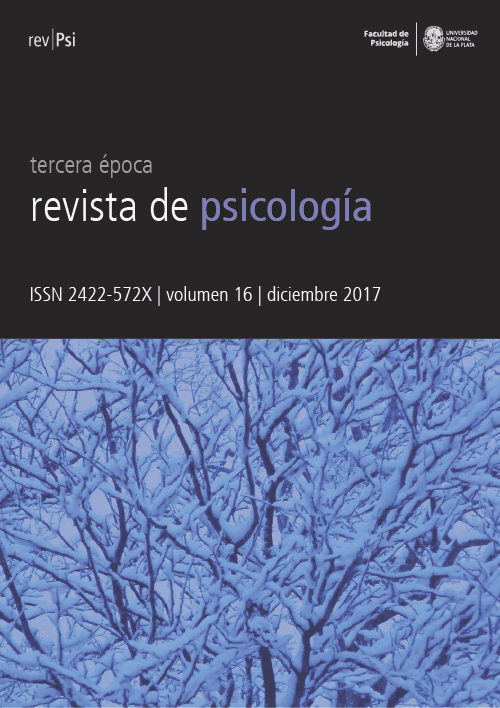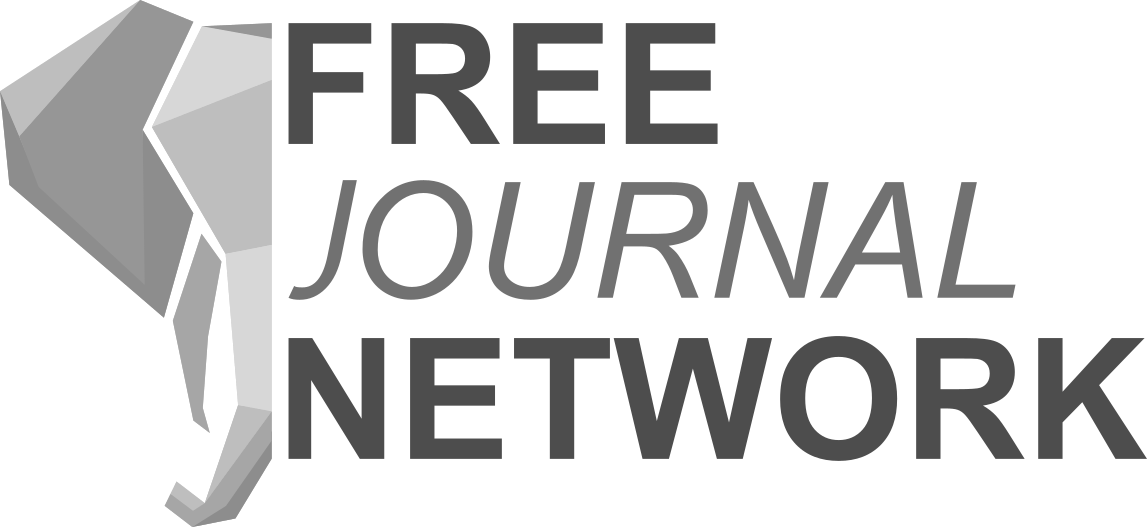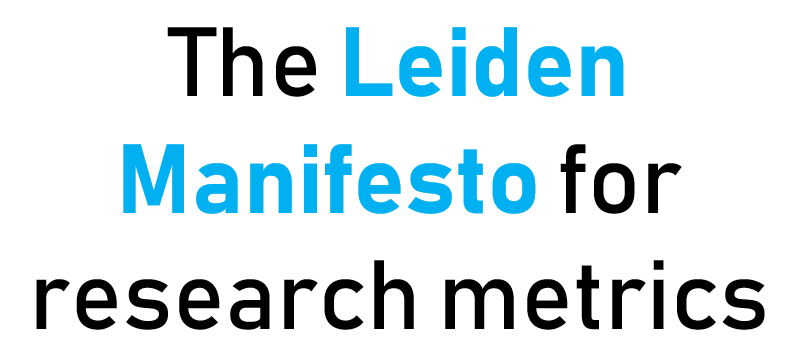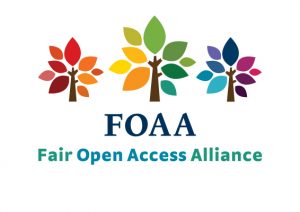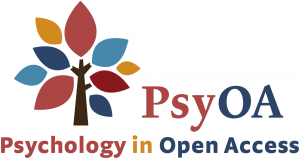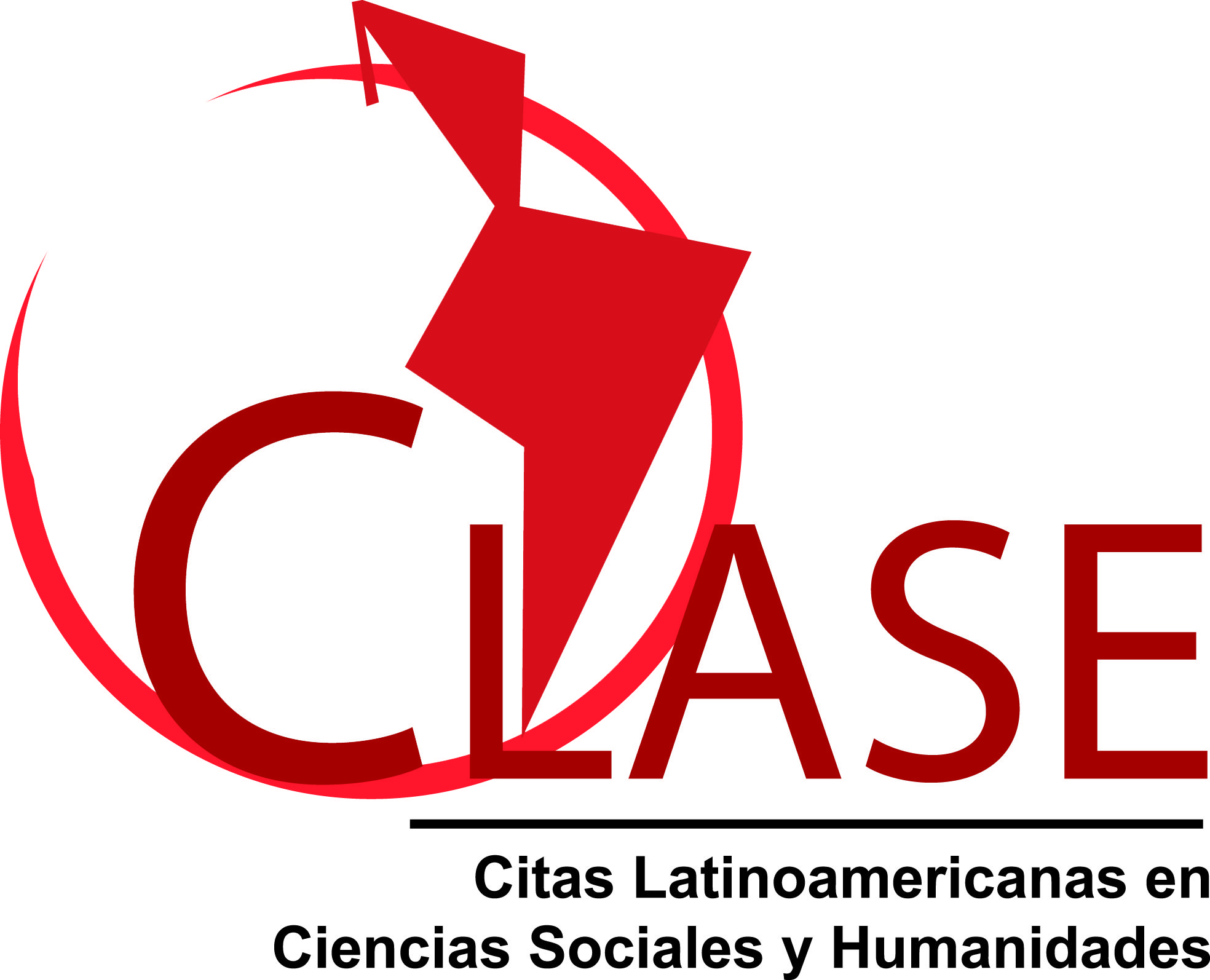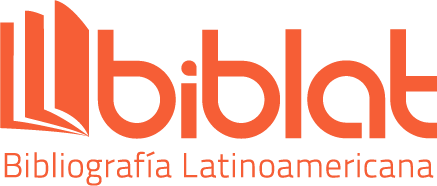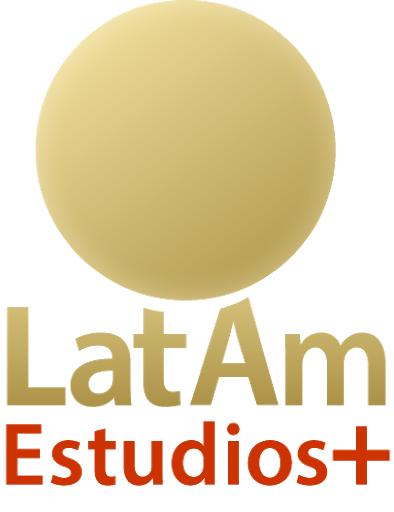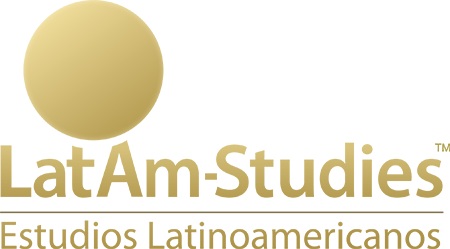Neurobiological perspectives to explain autism: a systematic literature review
DOI:
https://doi.org/10.24215/2422572Xe006Keywords:
neurobiology, autism, child & adolescent psychopathology, systematic reviewAbstract
In this article, we approach the neurobiological perspectives to explain autism by means of a systematic review of academic literature. We start by considering neurobiology as a complex field that studies the anatomo-physiological aspects of the central nervous system. In connection with autism, we recognize four main perspectives within this field: i) the neuroanatomical perspective, ii) the neurosocial perspective, iii) the genetic perspective and iv) the neurochemical perspective. After developing the main ideas of each perspective, we analyze possible compatibilities, juxtapositions and oppositions between them.
Downloads
Metrics
References
Acosta, J., Guzmán, G., Sesarini, C., Pallia, R. y Quiróz, N. (2006). Introducción a la neurobiología y neurofisiología del Trastorno del Espectro Autista. Revista Chilena de Neuropsicología, 11(2), 28-33. https://doi.org/10.5839/rcnp.2016.11.02.05
Alessandroni, N., Vietri, M. y Krasutzky, I. (2017). Atribución de estados mentales y autismo: desarrollos teóricos y controversias actuales. En M. C. Piro (Ed.), El autismo: perspectivas teórico-clínicas y desafíos contemporáneos (pp. 103-150). La Plata: EDULP - Editorial de la Universidad Nacional de La Plata.
Álvaro-González, L. C. (2015). El cerebro social: bases neurobiológicas de interés clínico. Revista de Neurología, 61(10), 458-470.
Amaral, D. G., Schumann, C. M. y Nordahl, C. W. (2008). Neuroanatomy of autism. Trends in Neurosciences, 31(3), 137-145. https://doi.org/10.1016/j.tins.2007.12.005
Andari, E., Duhamel, J.-R., Zalla, T., Herbrecht, E., Leboyer, M. y Sirigu, A. (2010). Promoting social behavior with oxytocin in high-functioning autism spectrum disorders. Proceedings of the National Academy of Sciences, 107(9), 4389-4394. https://doi.org/10.1073/pnas.0910249107
Aoki, Y., Yahata, N., Watanabe, T., Takano, Y., Kawakubo, Y., Kuwabara, H., … Yamasue, H. (2014). Oxytocin improves behavioural and neural deficits in inferring others’ social emotions in autism. Brain, 137(11), 3073-3086. https://doi.org/10.1093/brain/awu231
Asperger, H. (1944). Die “Autistischen Psychopathen” im Kindesalter [Psicopatía autística en la infancia]. Archiv für Psychiatrie und Nervenkrankheiten, 117, 76-136.
Baron-Cohen, S. (2005). Sex differences in the brain: Implications for explaining autism. Science, 310(5749), 819-823. https://doi.org/10.1126/science.1115455
Baron-Cohen, Simon. (2002). The extreme male brain theory of autism. Trends in Cognitive Sciences, 6(6), 248-254. https://doi.org/10.1016/S1364-6613(02)01904-6
Baron-Cohen, Simon. (2004). Autism: research into causes and intervention. Pediatric Rehabilitation, 7(2), 73-78. https://doi.org/10.1080/13638490310001654790
Baron-Cohen, Simon. (2010). Empathizing, systemizing, and the extreme male brain theory of autism. Progress in Brain Research, 186, 167-175. https://doi.org/10.1016/B978-0-444-53630-3.00011-7
Baron-Cohen, Simon y Hammer, J. (1997). Is autism an extreme form of the «male brain»? Advances in Infancy Research, 11, 193-217.
Baron-Cohen, Simon, Lombardo, M. V., Auyeung, B., Ashwin, E., Chakrabarti, B. y Knickmeyer, R. (2011). Why are autism spectrum conditions more prevalent in males? PLoS Biology, 9(6), e1001081. https://doi.org/10.1371/journal.pbio.1001081
Barttfeld, P., Amoruso, L., Ais, J., Cukier, S., Bavassi, L., Tomio, A., … Sigman, M. (2013). Organization of brain networks governed by long-range connections index autistic traits in the general population. Journal of Neurodevelopmental Disorders, 5(1), 16. https://doi.org/10.1186/1866-1955-5-16
Bauman, M. L. y Kemper, T. L. (2005). The neurobiology of autism (2.ª ed.). Baltimore: Johns Hopkins University Press.
Betancur, C. (2011). Etiological heterogeneity in autism spectrum disorders: More than 100 genetic and genomic disorders and still counting. Brain Research, 1380, 42-77. https://doi.org/10.1016/j.brainres.2010.11.078
Blanken, L. M. E., Mous, S. E., Ghassabian, A., Muetzel, R. L., Schoemaker, N. K., El Marroun, H., … White, T. (2015). Cortical morphology in 6- to 10-year old children with autistic traits: A population-based neuroimaging study. American Journal of Psychiatry, 172(5), 479-486. https://doi.org/10.1176/appi.ajp.2014.14040482
Brothers, L. (2002). The social brain: a project for integrating primate behavior and neurophysiology in a new domain. En J. T. Cacioppo, G. G. Berntson, R. Adolphs, C. S. Carter, R. J. Davidson, M. McClintock, … S. E. Taylor (Eds.), Foundations in social neuroscience (pp. 367-385). Cambridge: The MIT Press.
Cabrera, D. (2007). Generalities about autism. Revista Colombiana de Psiquiatría, 36(1), 208-220.
Cadaveira, M. y Waisburg, C. (2014). Autismo: guía para padres y profesionales. Ciudad Autónoma de Buenos Aires: Paidós.
Carper, R. A., Treiber, J. M., White, N. S., Kohli, J. S. y Müller, R.-A. (2017). Restriction spectrum imaging as a potential measure of cortical neurite density in autism. Frontiers in Neuroscience, 10, 610. https://doi.org/10.3389/fnins.2016.00610
CDC – Centers for Disease Control and Prevention. (2014). Autism Spectrum Disorder (ASD). Data & statistics. Recuperado a partir de http://www.cdc.gov/ncbddd/autism/data.html
Chen, J. A., Peñagarikano, O., Belgard, T. G., Swarup, V. y Geschwind, D. H. (2015). The emerging picture of Autism Spectrum Disorder: Genetics and pathology. Annual Review of Pathology: Mechanisms of Disease, 10(1), 111-144. https://doi.org/10.1146/annurev-pathol-012414-040405
Clipperton-Allen, A. E., Chen, Y. y Page, D. T. (2016). Autism-relevant behaviors are minimally impacted by conditional deletion of Pten in oxytocinergic neurons: Conditional deletion of Pten in Oxt cells. Autism Research, 9(12), 1248-1262. https://doi.org/10.1002/aur.1641
Courchesne, E., Carper, R. y Akshoomoff, N. (2003). Evidence of brain overgrowth in the first year of life in autism. Journal of the American Medical Association, 290(3), 337-344. https://doi.org/10.1001/jama.290.3.337
Cukier, S. H. (2005). Aspectos clínicos, biológicos y neuropsicológicos del trastorno autista: hacia una perspectiva integradora. Revista Argentina de Psiquiatría, 16(62), 273-278.
De la Torre-Ubieta, L., Won, H., Stein, J. L. y Geschwind, D. H. (2016). Advancing the understanding of autism disease mechanisms through genetics. Nature Medicine, 22(4), 345-361. https://doi.org/10.1038/nm.4071
Di Martino, A., Yan, C.-G., Li, Q., Denio, E., Castellanos, F. X., Alaerts, K., … Milham, M. P. (2014). The autism brain imaging data exchange: towards a large-scale evaluation of the intrinsic brain architecture in autism. Molecular Psychiatry, 19(6), 659-667. https://doi.org/10.1038/mp.2013.78
DiCicco-Bloom, E., Lord, C., Zwaigenbaum, L., Courchesne, E., Dager, S. R., Schmitz, C., … Young, L. J. (2006). The developmental neurobiology of Autism Spectrum Disorder. Journal of Neuroscience, 26(26), 6897-6906. https://doi.org/10.1523/JNEUROSCI.1712-06.2006
Domes, G., Heinrichs, M., Kumbier, E., Grossmann, A., Hauenstein, K. y Herpertz, S. C. (2013). Effects of intranasal oxytocin on the neural basis of face processing in Autism Spectrum Disorder. Biological Psychiatry, 74(3), 164-171. https://doi.org/10.1016/j.biopsych.2013.02.007
Dunbar, R. I. (1998). The social brain hypothesis. Brain, 9(10), 178-190. https://doi.org/10.1002/(SICI)1520-6505
Escera, C. (2004). Aproximación histórica y conceptual a la neurociencia cognitiva. Cognitiva, 16(2), 141-161. https://doi.org/10.1174/0214355042248929
Espín Jaime, J. C., Cerezo Navarro, M. V. y Espín Jaime, F. (2013). Lo que es Trastorno del Espectro Autista y lo que no lo es. Anales de Pediatría Continuada, 11(6), 333-341.
Fariña, L., Galli, E., Lazo, M., Mattei, L. y Raggio, V. (2015). Genética molecular y trastornos del espectro autista. Anales de la Facultad de Medicina, 2, 9-21.
Folstein, S. y Rutter, M. (1977). Genetic influences and infantile autism. Nature, 265(5596), 726-728. https://doi.org/10.1038/265726a0
Fuccillo, M. V. (2016). Striatal circuits as a common node for autism pathophysiology. Frontiers in Neuroscience, 10. https://doi.org/10.3389/fnins.2016.00027
Garcés-Vieira, M. V. y Suárez-Escudero, J. C. (2012). Neuroplasticidad: aspectos bioquímicos y neurofisiológicos. Revista CES Medicina, 28(1), 119-132.
García, R., Ayala, P. A. y Perdomo, S. P. (2012). Epigenética: definición, bases moleculares e implicaciones en la salud y en la evolución humana. Revista Ciencias de la Salud, 10(1), 59-71.
Gazzaniga, M. S. (2009). The cognitive neurosciences. Cambridge: The MIT Press.
Geschwind, D. H. y State, M. W. (2015). Gene hunting in Autism Spectrum Disorder: on the path to precision medicine. The Lancet Neurology, 14(11), 1109-1120. https://doi.org/10.1016/S1474-4422(15)00044-7
González, B. P. y Menchaca, N. F. (2007). Neurobiología del autismo: estudio de neuropatología y neuroimagen. Actas Españolas de Psiquiatría, 35(4).
Gordon, I., Vander Wyk, B. C., Bennett, R. H., Cordeaux, C., Lucas, M. V., Eilbott, J. A., … Pelphrey, K. A. (2013). Oxytocin enhances brain function in children with autism. Proceedings of the National Academy of Sciences, 110(52), 20953-20958. https://doi.org/10.1073/pnas.1312857110
Hazlett, H. C., Poe, M. D., Gerig, G., Styner, M., Chappell, C., Smith, R. G., … Piven, J. (2011). Early brain overgrowth in autism associated with an increase in cortical surface area before age 2 years. Archives of General Psychiatry, 68(5), 467. https://doi.org/10.1001/archgenpsychiatry.2011.39
Heinrichs, M. y Domes, G. (2008). Neuropeptides and social behaviour: effects of oxytocin and vasopressin in humans. Progress in Brain Research, 170, 337-350. https://doi.org/10.1016/S0079-6123(08)00428-7
Herbert, M. R., Ziegler, D. A., Deutsch, C. K., O’Brien, L. M., Lange, N., Bakardjiev, A., … Caviness, V. S. (2003a). Dissociations of cerebral cortex, subcortical and cerebral white matter volumes in autistic boys. Brain, 126(5), 1182-1192. https://doi.org/10.1093/brain/awg110
Herbert, M. R., Ziegler, D. A., Makris, N., Bakardjiev, A., Hodgson, J., Adrien, K. T., … Caviness, V. S. (2003b). Larger brain and white matter volumes in children with developmental language disorder. Developmental Science, 6(4), F11-F22. https://doi.org/10.1111/1467-7687.00291
Herbert, M. R., Ziegler, D. A., Makris, N., Filipek, P. A., Kemper, T. L., Normandin, J. J., … Caviness, V. S. (2004). Localization of white matter volume increase in autism and developmental language disorder. Annals of Neurology, 55(4), 530-540. https://doi.org/10.1002/ana.20032
Herpertz, S. C. y Bertsch, K. (2014). The social-cognitive basis of personality disorders. Current Opinion in Psychiatry, 27(1), 73-77. https://doi.org/10.1097/YCO.0000000000000026
Hollander, E., Bartz, J., Chaplin, W., Phillips, A., Sumner, J., Soorya, L., … Wasserman, S. (2007). Oxytocin Increases retention of social cognition in autism. Biological Psychiatry, 61(4), 498-503. https://doi.org/10.1016/j.biopsych.2006.05.030
Hollander, E., Novotny, S., Hanratty, M., Yaffe, R., DeCaria, C. M., Aronowitz, B. R. y Mosovich, S. (2003). Oxytocin infusion reduces repetitive behaviors in adults with autistic and Asperger’s disorders. Neuropsychopharmacology, 28(1), 193-198. https://doi.org/10.1038/sj.npp.1300021
Hulbert, Samuel W. y Jiang, Y. (2017). Cellular and circuitry bases of autism: Lessons learned from the temporospatial manipulation of autism genes in the brain. Neuroscience Bulletin, 33(2), 205-218. https://doi.org/10.1007/s12264-017-0112-7
Hulbert, S.W. y Jiang, Y.-H. (2016). Monogenic mouse models of autism spectrum disorders: Common mechanisms and missing links. Neuroscience, 321, 3-23. https://doi.org/10.1016/j.neuroscience.2015.12.040
Hutsler, J. J. y Casanova, M. F. (2016). Cortical construction in autism spectrum disorder: Columns, connectivity and the subplate. Neuropathology and Applied Neurobiology, 42(2), 115-134. https://doi.org/10.1111/nan.12227
IsHak, W. W., Kahloon, M. y Fakhry, H. (2011). Oxytocin role in enhancing well-being: A literature review. Journal of Affective Disorders, 130(1-2), 1-9. https://doi.org/10.1016/j.jad.2010.06.001
Jiao, Y., Chen, R., Ke, X., Chu, K., Lu, Z. y Herskovits, E. H. (2010). Predictive models of autism spectrum disorder based on brain regional cortical thickness. NeuroImage, 50(2), 589-599. https://doi.org/10.1016/j.neuroimage.2009.12.047
Juvenal, G. J. (2014). Epigenética: vieja palabra, nuevos conceptos. Revista Argentina de Endocrinología y Metabolismo, 51(2), 66-74.
Kanner, L. (1943/1993). Autistic disturbances of affective contact. Nervous Child, 2, 217250.
Kaulino, A. y Stecher, A. (Eds.). (2008). Cartografía de la psicología contemporánea. Pluralismo y modernidad. Santiago de Chile: LOM Ediciones.
Kays, J. L., Hurley, R. A. y Taber, K. H. (2012). The dynamic brain: neuroplasticity and mental health. The Journal of Neuropsychiatry and Clinical Neurosciences, 24(1), 118-124. https://doi.org/10.1176/appi.neuropsych.24.1.118
Lai, M.-C., Lombardo, M. V., Auyeung, B., Chakrabarti, B. y Baron-Cohen, S. (2015). Sex/gender differences and autism: Setting the scene for future research. Journal of the American Academy of Child & Adolescent Psychiatry, 54(1), 11-24. https://doi.org/10.1016/j.jaac.2014.10.003
Lai, M.-C., Lombardo, M. V. y Baron-Cohen, S. (2014). Autism. The Lancet, 383(9920), 896-910. https://doi.org/10.1016/S0140-6736(13)61539-1
Lai, M.-C., Lombardo, M. V., Ecker, C., Chakrabarti, B., Suckling, J., Bullmore, E. T., … Baron-Cohen, S. (2015). Neuroanatomy of individual differences in language in adult males with autism. Cerebral Cortex, 25(10), 3613-3628. https://doi.org/10.1093/cercor/bhu211
Leone, A. P. (2009). Characterizing and modulating neuroplasticity of the adult human brain. En M. S. Gazzaniga (Ed.), The cognitive neurosciences (pp. 141-152). Cambridge: The MIT Press.
Levitt, P. y Campbell, D. B. (2009). The genetic and neurobiologic compass points toward common signaling dysfunctions in autism spectrum disorders. Journal of Clinical Investigation, 119(4), 747-754. https://doi.org/10.1172/JCI37934
Liu, Z., Li, X., Zhang, J.-T., Cai, Y.-J., Cheng, T.-L., Cheng, C., … Qiu, Z. (2016). Autism-like behaviours and germline transmission in transgenic monkeys overexpressing MeCP2. Nature, 530(7588), 98-102. https://doi.org/10.1038/nature16533
Lombardi, L. M., Baker, S. A. y Zoghbi, H. Y. (2015). MECP2 disorders: from the clinic to mice and back. Journal of Clinical Investigation, 125(8), 2914-2923. https://doi.org/10.1172/JCI78167
LoParo, D. y Waldman, I. D. (2015). The oxytocin receptor gene (OXTR) is associated with autism spectrum disorder: a meta-analysis. Molecular Psychiatry, 20(5), 640-646. https://doi.org/10.1038/mp.2014.77
Lord, C., Rutter, M. y Le Couteur, A. (1994). Autism diagnostic interview-revised: A revised version of a diagnostic interview for caregivers of individuals with possible pervasive developmental disorders. Journal of Autism and Developmental Disorders, 24(5), 659-685. https://doi.org/10.1007/BF02172145
Maia, L. A. C. R., Da Silva, C. R., Correia, C. R. y Bartolomé, M. V. P. (2006). El modelo de Alexander Romanovich Luria (revisitado) y su aplicación a la evaluación neuropsicológica. Revista Galego-Portuguesa de Psicoloxía e Educación, 11(13), 155-194.
Mannion, A. y Leader, G. (2013). Comorbidity in autism spectrum disorder: A literature review. Research in Autism Spectrum Disorders, 7(12), 1595-1616. https://doi.org/10.1016/j.rasd.2013.09.006
Martins, G. J. (2017). Neurobiology of autism spectrum disorders. En B. Barahona Correa y R. J. van der Gaag (Eds.), Autism spectrum disorders in adults (pp. 29-93). Lisboa: Springer International Publishing.
Meltzer, A. y Van de Water, J. (2017). The role of the immune system in Autism Spectrum Disorder. Neuropsychopharmacology, 42(1), 284-298. https://doi.org/10.1038/npp.2016.158
Miles, J. H. (2011). Autism spectrum disorders—A genetics review. Genetics in Medicine, 13(4), 278-294. https://doi.org/10.1097/GIM.0b013e3181ff67ba
Minshew, N. J. y Payton, J. B. (1988). New perspectives in autism. Part 2: the differential diagnosis and neurobiology of autism. Current Problems in Pediatrics, 18(11), 618-694. https://doi.org/10.1016/0045-9380(88)90017-5
Minshew, N. J., Sweeney, J. A., Bauman, M. L. y Webb, S. J. (2013). Neurologic aspects of autism. En F. R. Volkmar, R. Paul, A. Klin, y D. Cohen (Eds.), Handbook of Autism and Pervasive Developmental Disorders (pp. 473-514). Hoboken: John Wiley & Sons, Inc. https://doi.org/10.1002/9780470939345.ch18
Minshew, N. J. y Williams, D. L. (2007). The new neurobiology of autism: Cortex, connectivity, and neuronal organization. Archives of Neurology, 64(7), 945. https://doi.org/10.1001/archneur.64.7.945
Morant, A., Mulas, F. y Hernández, S. (2001). Bases neurobiológicas del autismo. Neurología Clínica, 2(1), 163-171.
Mulas, F., Etchepareborda, M. C., Hernández, S., Abad, L., Téllez de Meneses, M. y Mattos, L. (2005). Bases neurobiológicas de los trastornos específicos de la comunicación (espectro autista). Neurología, 41(1), S149-S153.
Mullins, C., Fishell, G. y Tsien, R. W. (2016). Unifying views of Autism Spectrum Disorders: A consideration of autoregulatory feedback loops. Neuron, 89(6), 1131-1156. https://doi.org/10.1016/j.neuron.2016.02.017
Nevile, H. y Sur, M. (2009). Introduction. En M. S. Gazzaniga (Ed.), The cognitive neurosciences (p. 89). Cambridge: The MIT Press.
Palau-Baduell, M., Salvadó-Salvadó, B., Clofent-Torrentó, M. y Valls-Santasusana, A. (2012). Autismo y conectividad neural. Revista de Neurología, 54(1), S31-S39.
Pelphrey, K. A., Shultz, S., Hudac, C. M. y Vander Wyk, B. C. (2011). Constraining heterogeneity: the social brain and its development in autism spectrum disorder. Journal of Child Psychology and Psychiatry, 52(6), 631-644. https://doi.org/10.1111/j.1469-7610.2010.02349.x
Piro, M. C. (2015). Las variedades del autismo: su presentación en la demanda asistencial. Temas en Psicología, 2, 13-32.
Pobbe, R. L. H., Pearson, B. L., Defensor, E. B., Bolivar, V. J., Young, W. S., Lee, H.-J., … Blanchard, R. J. (2012). Oxytocin receptor knockout mice display deficits in the expression of autism-related behaviors. Hormones and Behavior, 61(3), 436-444. https://doi.org/10.1016/j.yhbeh.2011.10.010
Rapin, I. y Katzman, R. (1998). Neurobiology of autism. Annals of Neurology, 43(1), 7-14. https://doi.org/10.1002/ana.410430106
Rivière, Á. (2001). Autismo. Orientaciones para la intervención educativa. Madrid: Trotta.
Rotta, N. T. (2013). Trastorno del espectro autista y trastorno específico del lenguaje ¿dos entidades diferentes o un continuo de manifestaciones neuropsicológicas? Medicina, 73(1), 10-15.
Schaer, M., Kochalka, J., Padmanabhan, A., Supekar, K. y Menon, V. (2015). Sex differences in cortical volume and gyrification in autism. Molecular Autism, 6(1). https://doi.org/10.1186/s13229-015-0035-y
Shou, X.-J., Xu, X.-J., Zeng, X.-Z., Liu, Y., Yuan, H.-S., Xing, Y., … Han, J.-S. (2017). A volumetric and functional connectivity MRI study of brain arginine-vasopressin pathways in autistic children. Neuroscience Bulletin, 33(2), 130-142. https://doi.org/10.1007/s12264-017-0109-2
Sierra-Fitzgerald, O. y Munévar, G. (2007). Nuevas ventanas hacia el cerebro humano y su impacto en la neurociencia cognoscitiva. Revista Latinoamericana de Psicología, 39(1), 143-157. https://doi.org/10.14349/rlp.v39i1.625
Sztainberg, Y., Chen, H., Swann, J. W., Hao, S., Tang, B., Wu, Z., … Zoghbi, H. Y. (2015). Reversal of phenotypes in MECP2 duplication mice using genetic rescue or antisense oligonucleotides. Nature, 528(7580), 123-126. https://doi.org/10.1038/nature16159
Sztainberg, Y. y Zoghbi, H. Y. (2016). Lessons learned from studying syndromic autism spectrum disorders. Nature Neuroscience, 19(11), 1408-1417. https://doi.org/10.1038/nn.4420
Tick, B., Bolton, P., Happé, F., Rutter, M. y Rijsdijk, F. (2016). Heritability of autism spectrum disorders: a meta-analysis of twin studies. Journal of Child Psychology and Psychiatry, 57(5), 585-595. https://doi.org/10.1111/jcpp.12499
Urrútia, G. y Bonfill, X. (2010). Declaración PRISMA: una propuesta para mejorar la publicación de revisiones sistemáticas y metaanálisis. Medicina Clínica, 135(11), 507-511. https://doi.org/10.1016/j.medcli.2010.01.015
Wang, M., Li, H., Takumi, T., Qiu, Z., Xu, X., Yu, X. y Bian, W.-J. (2017). Distinct defects in spine formation or pruning in two gene duplication mouse models of autism. Neuroscience Bulletin, 33(2), 143-152. https://doi.org/10.1007/s12264-017-0111-8
Werling, D. M. (2016). The role of sex-differential biology in risk for autism spectrum disorder. Biology of Sex Differences, 7(1), 58. https://doi.org/10.1186/s13293-016-0112-8
Wolff, J. J., Gu, H., Gerig, G., Elison, J. T., Styner, M., Gouttard, S., … the IBIS Network. (2012). Differences in white matter fiber tract development present from 6 to 24 months in infants with autism. American Journal of Psychiatry, 169(6), 589-600. https://doi.org/10.1176/appi.ajp.2011.11091447
Wu, S., Jia, M., Ruan, Y., Liu, J., Guo, Y., Shuang, M., … Zhang, D. (2005). Positive association of the oxytocin receptor gene (OXTR) with autism in the chinese Han population. Biological Psychiatry, 58(1), 74-77. https://doi.org/10.1016/j.biopsych.2005.03.013
Xu, X., Miller, E. C. y Pozzo-Miller, L. (2014). Dendritic spine dysgenesis in Rett syndrome. Frontiers in Neuroanatomy, 8(97), 1-8. https://doi.org/10.3389/fnana.2014.00 097
Young, L. J. y Barrett, C. E. (2015). Can oxytocin treat autism? Science, 347(6224), 825-826. https://doi.org/10.1126/science.aaa8120
Zhang, R., Zhang, H.-F., Han, J.-S. y Han, S.-P. (2017). Genes related to oxytocin and arginine-vasopressin pathways: Associations with Autism Spectrum Disorders. Neuroscience Bulletin, 33(2), 238-246. https://doi.org/10.1007/s12264-017-0120-7
Downloads
Published
How to Cite
Issue
Section
License
![]()
Authors who publish in this journal accept the following conditions:
- Authors retain the copyright and assign the right of first publication to the journal, with the work registered under a Creative Commons attribution license (CC-BY), which allows third parties to use what is published whenever they mention the authorship of the work and the first publication in this magazine.
- Authors can make other independent and additional contractual agreements for the non-exclusive distribution of the article published in this journal (e.g., include it in an institutional repository or publish it in a book) as long as they clearly indicate that the work was published for the first time in this magazine.
- Authors are allowed and encouraged to publish their work on the Internet (e.g., on institutional or personal webpages) before and during the review and publication process, as it can lead to productive exchanges and greater and faster dissemination of published work (see The Effect of Open Access ).

